Will 2023 be the hottest year on record?
Unraveling the Heat: Will 2023 Break Temperature Records?

2023 is likely to be one of the hottest years on record, possibly ranking as the fourth warmest year between the hottest year on record and the sixth warmest year.
The global temperatures in the first quarter of 2023 have already been recorded as the fourth highest since temperature records began, following the years 2016, 2020, and 2017. Furthermore, March 2023 was the second warmest March on record since temperature records began in the mid-19th century. The chart below illustrates the monthly temperature values from 1880 to the present year [1]:
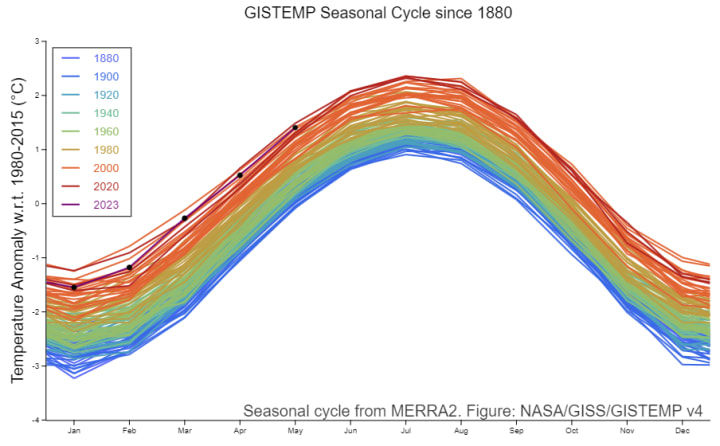
The following graph shows the variation of annual average temperature between the ocean and land over time [2]:
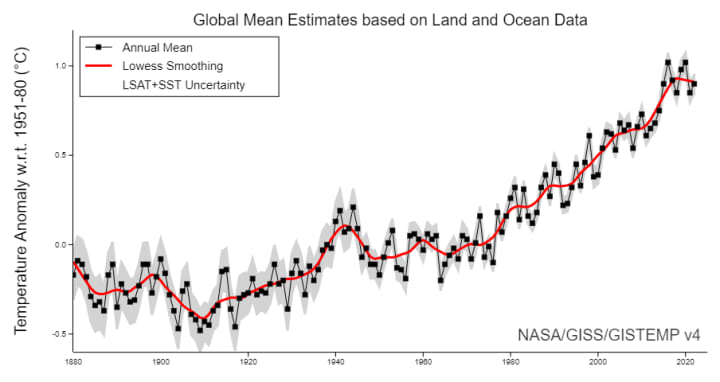
Here are the global temperatures from December of last year to May of this year [3]:
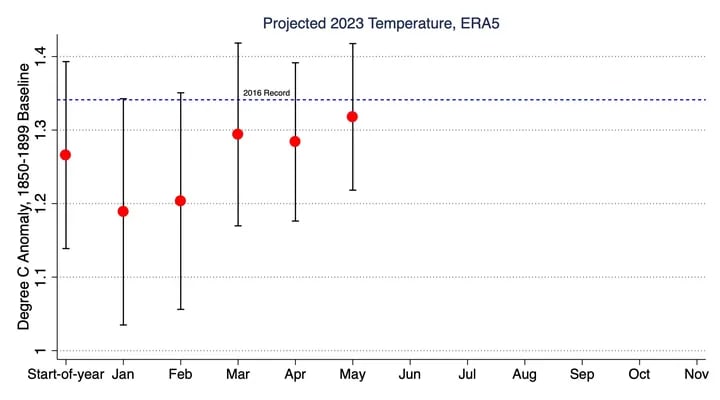
The El Niño of 2023 arrived too early
NOAA announced on Thursday that a strong El Niño event is forming.
El Niño refers to the phenomenon where the waters of the eastern Pacific Ocean anomalously warm every few years (approximately every 4 years), bringing additional natural heat to the already warming Earth. Events like the 1998 floods and the rare occurrence of four Category 5 hurricanes in the 2005 Atlantic hurricane season were influenced by El Niño.
This year's El Niño event is occurring one to two months earlier than usual, with a 25% chance of reaching the strongest level.
Typically, El Niño causes above-average sea temperatures in the eastern Pacific and below-average sea temperatures in the western Pacific. The convection activity in the low-latitude regions of the western Pacific is suppressed, resulting in a decrease in the supply of heat and moisture to the atmosphere. This also leads to a lower number of typhoon formations in the western Pacific. In China's southern region, during summer, under the influence of the subtropical high (Western Pacific Subtropical High), the sinking air is heated and forms a huge hot air mass, which covers the ground like a thick blanket. Coupled with the warm and humid air from the South China Sea, continuous high temperatures occur in the southern part of China.
And it's not just southern China. Extreme heat is currently spreading to higher latitudes, with the central region of Siberia in the figure below being even hotter than China [3].
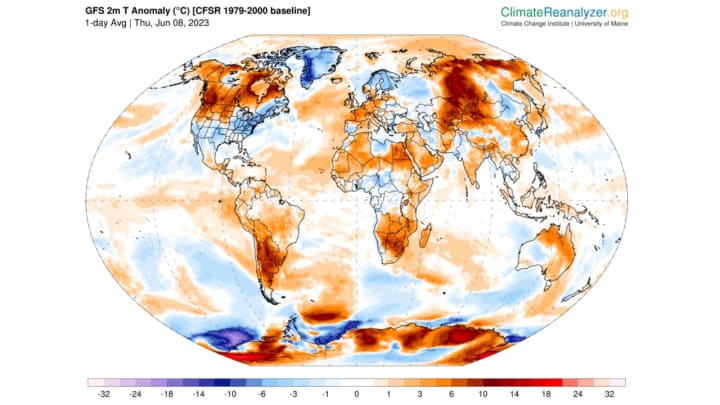
Meanwhile, more than 100 weather stations in Australia recorded the coldest May temperatures ever recorded, with a cold snap causing Sydney to experience its coldest May in 66 years [4].

With global temperatures on the rise, extreme La Niña and El Niño events are occurring twice as often as before [5]. The past eight years have been the hottest on record, with temperatures averaging at least 1.08 to 1.32 degrees Celsius higher than pre-industrial levels.
This year, we will once again face the threats of heatwaves and floods, while droughts in Africa will lead to humanitarian disasters.
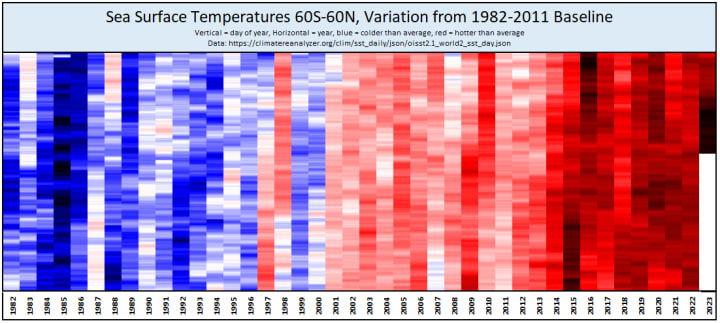
97% of climate scientists believe that the climate warming observed over the past century is caused by human activities [6]. Over the past few decades, certain natural factors would have led to a gradual decline in global temperatures. However, excessive carbon dioxide emissions have rapidly reversed this trend within half a century, causing temperatures to sharply rise.
From a cosmic perspective, our water world, Earth, is rare and fragile. We may be triggering unstoppable chain reactions that could turn Earth into a scorching hell similar to Venus or repeat the extinction events of the Permian-Triassic era.
Reference
- https://data.giss.nasa.gov/gistemp/graphs_v4/
- https://data.giss.nasa.gov/gistemp/graphs_v4/
- https://edition.cnn.com/2023/06/08/asia/heat-wave-siberia-climate-intl/index.html
- https://www.abc.net.au/news/2023-05-31/australia-average-temperatures-plummet-in-may/102413068
- https://www.carbonbrief.org/extreme-el-ninos-double-frequency-under-one-point-five-celsius-warming-study/#:~:text=If%20global%20warming%20reaches%201.5,years%2C%20rather%20every%2020%20years
- W. R. L. Anderegg, “Expert Credibility in Climate Change,” Proceedings of the National Academy of Sciences Vol. 107 No. 27, 12107-12109 (21 June 2010); DOI: 10.1073/pnas.1003187107.





Comments
There are no comments for this story
Be the first to respond and start the conversation.